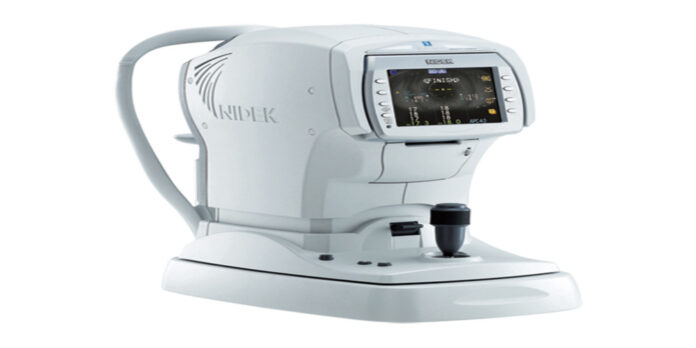When it comes to glaucoma and IOP testing, there are a lot of options out there. From traditional methods like handheld tonometers to newer technology like optical coherence tomography (OCT), there’s plenty of room for debate on which testing method is best. In this article, we’ll go over the pros and cons of non contact tonometer (NCT) machines—also known as applanation tonometry machines or applanation devices—and why they’re such an important part of routine eye exams.
What is a non-contact tonometer?
A non-contact tonometer is a handheld device that measures IOP (intraocular pressure). It’s used to measure IOP in the office or at home.
It’s often used for patients who are nervous about contact tonometers, but it isn’t as accurate as a contact tonometer.
Non-contact tonometers aren’t used for glaucoma diagnosis
How the non-contact tonometer works.
To measure the eye pressure, the non-contact tonometer uses infrared light to reflect off of a surface. In this case, the surface is either your cornea or retina. The way it works is like this:
- The doctor holding the device presses it against your eye and turns on an infrared light source.
- This light bounces off of your cornea (or retina) and onto a photodetector in the handpiece of the tonometer.
- A computer inside analyzes how much light reflects off of you back into its camera lens system.
It’s important to note that this process does not hurt at all because there is no contact between any part of the instrument and your eye itself; instead, only indirect contact occurs when an instrument touches another part such as skin or eyelid tissue instead!
Getting your measurements taken with a non-contact tonometer.
Now that you know what a non-contact tonometer is and how it works, let’s take a look at how you’ll use it.
- Position yourself comfortably in front of the eye chart. Make sure the room is well lit, and have someone positioned behind your head to help if needed.
- Hold the device in one hand, with your thumb resting on the power button (this will turn on the device). With your free hand, gently pull down on one eyelid until you see most of the eyeball. The amount of force necessary should be minimal; pressure should not be painful or uncomfortable for either party involved!
- Slowly move the device up towards your eye until it comes into contact with your cornea—the transparent coating at the front of each eyeball where light enters through its pupils when we look around us during daily activities like reading or driving.* The measurement process begins automatically with this touch point; there’s no need for additional action from either user or assistant.* When you hear one tone indicating that measurements are being taken off-screen as part of their automatic recording process (this will only last about five seconds), hold still while measurements are completed before repeating steps 1 through 3 above again on another side if desired.”
Comparing measurements to IOP and glaucoma risk.
- IOP measurements are used to diagnose glaucoma.
- Non-contact tonometry (NCT) is a newer, more accurate way of measuring IOP.
- NCT has the advantage of being much easier to use than traditional methods.
What’s next after IOP measurements?
If your IOP measurement is high, you may need treatment. If it’s normal or low, you may still need treatment. Regardless of the results of your tonometry test:
- Have a complete eye exam with an ophthalmologist (eye doctor) who specializes in glaucoma.
- Follow up with your eye doctor regularly to check on your condition and monitor for changes over time.
Non contact tonometers are easy to use and well calibrated, but they’re no replacement for regular eye exams.
Non-contact tonometers are easy to use and well calibrated, but they’re no replacement for regular eye exams. These devices don’t offer the same level of detail as other testing methods. They can’t measure glaucoma risk and aren’t recommended for use on children under age seven. Additionally, non-contact tonometers aren’t available at all locations—so you might need to wait until your next appointment before you can get an accurate measurement of your IOP.
With so many benefits and drawbacks to consider, it’s important to think through your options carefully before deciding whether or not a non-contact tonometer is right for you!
Conclusion
In conclusion, non-contact tonometers are an invaluable tool for measuring IOP. They’re also easy to use and well calibrated, so they produce consistent results that can be used to track your eyesight over time. However, they’re no replacement for regular eye exams because they don’t measure all of the important things that a doctor can find during an exam. If you want to keep your eyes healthy and avoid glaucoma risks like blindness later in life then don’t forget about regular checkups!





